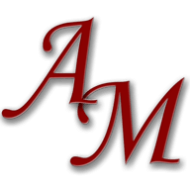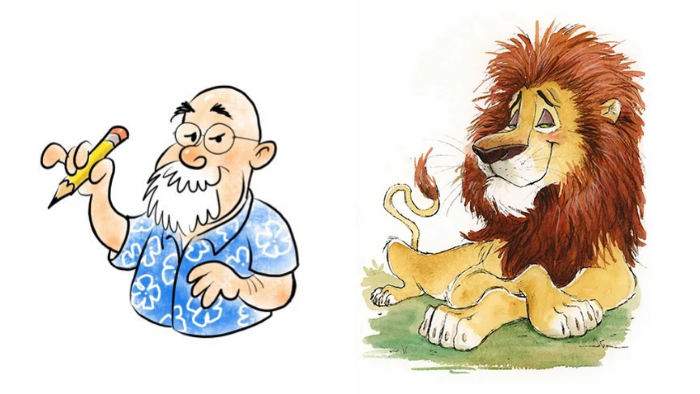“At Disney we had in-studio drawing sessions at lunch to keep up our skills. You have to be able to capture action and emotion quickly”
Tim Hodge is a talented artist, animator, voice actor, director, and writer located in Tennessee, in the United States. Ever since he was a little boy, he knew he would pursue an artistic career. Since 1985, Hodges has been specializing in animation and has worked for popular studios like Walt Disney Feature Animation, Big Idea Productions, Dreamworks Television, and Warner Brothers Television. His ideas have been part of popular feature films like The Lion King, Pocahontas, Mulan, and The VeggieTales.
Tim has to continually adapt to the styles of the studios, but he also focuses on developing his own vision. He also teaches artists and shares his knowledge through online courses like Drawing Cartoon Animals and Drawing Cartoon People. On his website, you will also find wonderful books he has published such as 31 Uses for a Zombie and Pith & Vinegar.

In this Q&A, artist Tim Hodge shares with PoseSpace details about his experience in feature films at the most prestigious Studios in the US, great advice for artists who have an interest in animation and cartoons, and more:
When did you first know you wanted to become an artist?
Like most of us, I’ve been drawing since I was very young. I just kept it up. But as far as drawing as a career, it was when I was around 12 and discovered my dad’s movie camera (an 8mm film camera, this was pre-home video). He showed me how it could take one frame at a time to make animated films. When I realized I could one day get a job drawing, my future was set.
Which artist has influenced you?
This could be a long, long list. I’ll try and keep it short: Bill Peet, Jack Davis, Norman Rockwell, Beatrix Potter, Wallace Tripp, Honoré Daumier, and Winslow Homer just to start. But it seems every day, I am finding new up and coming artists that blow me away.

You have worked for Disney Feature Animation, Big Idea Productions, Dreamworks Television, Warner Brothers Television, and more! What has been your most memorable studio experience?
Again, so many to mention. I think one that stands out is watching The Lion King (my first feature film) at the wrap party with my family and all my co-workers. We finally go to show what all the long hours were for. And of course, we all sat glued through the credits, cheering each other. There was an incredible amount of camaraderie. We all stay in touch to this day. Many of my former animator friends now have painting careers.
What is the importance of gesture drawing for you?
It’s the basis of everything. Of course all the Masters have relied on it, but it’s also at the essence of animation. At Disney we had in-studio drawing sessions at lunch to keep up our skills. You have to be able to capture action and emotion quickly. Eugene Delacroix said (I paraphrase) “If you are drawing someone falling from a building, you should finish the sketch before he hits the ground.” It’s a gruesome take to be sure, but he vividly nails down the importance of sketching quickly.

What do you think of PoseSpace? Do you have a favorite model?
I love PoseSpace. As a freelance artist, my schedule is rather erratic, and I often don’t sit down to paint for myself until 9 or 10 at night. Or I may grab an hour or two on the weekend. Hiring a model or running out to a group session is very difficult. But PoseSpace is always there. And if I have to put a painting away for a week, my PoseSpace model is always ready when I get back. Lately, I’ve been going through Luana’s poses and doing some oil and watercolor sketching. Her poses have great rhythm.

Have you been working on a special project during quarantine?
Actually, animation is a business that hasn’t had the impact that other businesses have. Everyone in animation I know has been working from home, and production schedules haven’t really been impacted. But I always try and paint and draw for myself no matter what I’m working on. As an artist, I need a personal creative outlet, too, something that won’t get critiqued by an Art Director. We all have to create our own vision, especially after drawing someone else’s all day.

Do you have a favorite source of materials?
While it’s easy to order stuff from the big online retailers, or even pop into one of the many craft stores around, I like to seek out an Art Supply store, even if it’s several miles farther away. (Plaza Artist Materials, and Jerry’s Artarama in Nashville, if I can drop names). I find that the workers are more knowledgeable of the products because they use them all too. (I also worked at an art supply store in Tulsa when I was in my early 20s).
What advice do you have for artists who have an interest in cartoons?
When I was around 14, I got to meet Marvel Comic artist, Johnny Romita, Sr. I showed him my sketchbook full of cartoon animals, he flipped through it and he stopped on a drawing of an elephant. And I’m going to tell you what he told me. “Don’t only practice cartoons. Draw from life. Build a basis in solid drawing. Then cartooning is easier, and your drawings look better.” Years later when I was applying to Disney, they said the same thing. And I’ve always found it to be true.

Tim Hodge’s website: https://timhodgeart.com/
Instagram: https://www.instagram.com/baldmelon/
Twitter: https://twitter.com/BaldMelonTim
Facebook: https://www.facebook.com/TimHodgeArt/

